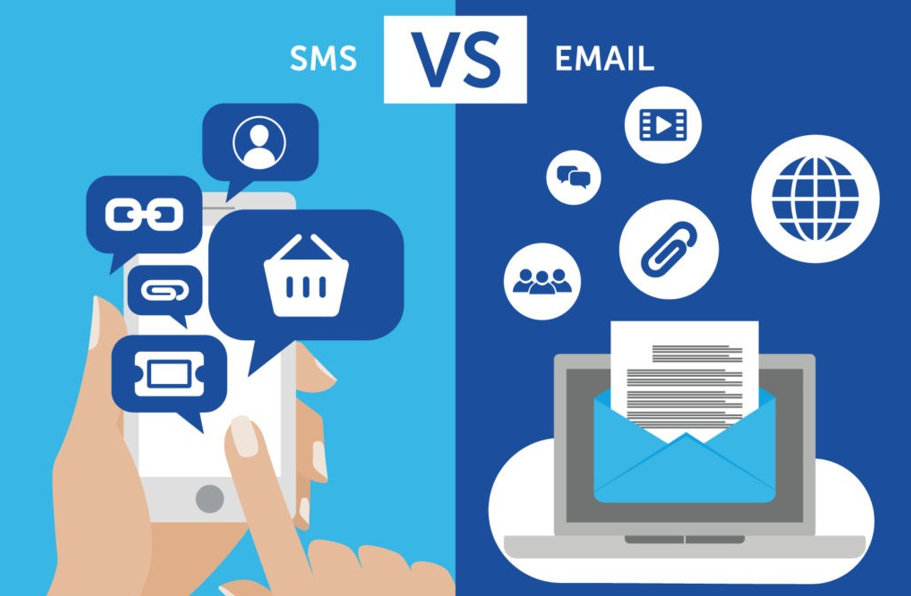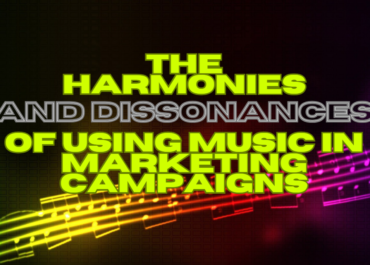SMS vs Email: Communicating with Your Customers

Being able to directly interact and communicate with your customer base is one of the many benefits of investing in digital marketing.
Most commonly, this can be accomplished by businesses messaging a customer directly on their cell phone (SMS) or sending notifications directly to their email address.
Though both methods have proven to be effective in their own way, one can’t help but wonder which strategy has proven itself to be the best option for businesses today.
Join us as we dissect the capabilities of SMS messaging vs email marketing and review the pros and cons of each of these 21st century marketing strategies to help find out which strategy could be best for you.
The Pros and Cons of SMS Messaging vs Email Marketing
SMS messaging and email marketing are both popular communication channels used by businesses today to reach and interact with their customers.
This one-on-one communication has proven itself to be an important part of today’s marketing strategies and has almost become expected by the modern-day customer.
While these strategies do indeed have their similarities when placed side-by-side, they also each have their own distinct characteristics and considerations that make them each unique and valuable avenues to consider when a business is looking to connect directly with their customer base.
Let’s take a closer look at some of the similarities and differences of each of these popular marketing strategies to see if we can determine some pros and cons of each, and further discuss where each is able to excel when compared to the other and where they might fall short.
- Reach and accessibility:
- SMS messaging: SMS has a higher open and read rate compared to email. Most people carry their mobile phones with them at all times, making SMS messages more likely to be seen promptly.
- Email marketing: Emails have a wider reach as they can be accessed on various devices, including smartphones, tablets, and computers. However, email open rates are typically lower than SMS open rates.
- Character limit:
- SMS messaging: SMS messages are limited to 160 characters per message. However, with concatenation, longer messages can be split and reassembled on the recipient’s device.
- Email marketing: Emails have no strict character limit, allowing businesses to include more detailed information, images, and attachments.
- Visual content:
- SMS messaging: SMS messages are primarily text-based and don’t support complex formatting or multimedia content. However, you can include short links to direct recipients to webpages or landing pages.
- Email marketing: Emails offer more flexibility for visual content, including images, videos, hyperlinks, and custom formatting. This allows for more engaging and visually appealing marketing campaigns.
- Opt-in and regulations:
- SMS messaging: Sending SMS messages generally requires explicit opt-in consent from recipients, as regulated by laws like the Telephone Consumer Protection Act (TCPA) in the United States.
- Email marketing: Email marketing also requires opt-in consent, but regulations such as the CAN-SPAM Act (in the U.S.) and the General Data Protection Regulation (GDPR) in the European Union impose specific rules for sending commercial emails.
- Delivery and deliverability:
- SMS messaging: SMS messages are typically delivered almost instantly and have a high delivery rate. However, some factors like network congestion or temporary service issues can cause delays.
- Email marketing: Emails may face challenges with deliverability due to spam filters, inbox placement algorithms, or technical issues. Deliverability rates can vary based on factors like sender reputation, content quality, and subscriber engagement.
- Cost:
- SMS messaging: Sending SMS messages can be more expensive compared to email marketing, as carriers often charge per message or offer messaging packages.
- Email marketing: Email marketing is generally more cost-effective since the costs are typically based on the number of subscribers or the email service provider’s pricing structure.
The Wrap Up
As you can see, each option can be impactful in its own right and neither should be dismissed all together.
Overall, both SMS messaging and email marketing have their strengths and can be effective in different scenarios and it’s common for businesses to use both channels strategically to maximize their reach and engage with customers effectively.
While SMS messages can be particularly useful for time-sensitive or urgent communications, they can also be more costly when compared to basic email messaging.
… And while emails do take a bit more time in the long run, they offer much more room for detailed content (I.E., character usage) to communicate valuable information with your customer base as well as stronger visual appeal.
In the end, it most likely comes down to individual preferences and what you believe your own personal customer base would prefer and react to most positively.
P.S. If you’re interested in getting the most out of your marketing campaign and would like someone to step in and help you along the way, we encourage you to reach out to Rain Digital today.
Our team’s years of marketing experience could be just what you and your company need to turn that lingering corner and finally make your business the success story you’ve always dreamed of.





